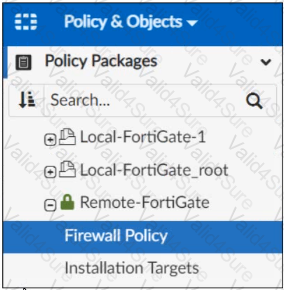NSE5_FMG-7.2 Exam Dumps - Fortinet NSE 5 - FortiManager 7.2
Refer to the exhibit.

On FortiManager, an administrator created a new system template named Training with two new DNS addresses. During the installation preview stage, the administrator notices that central-management settings need to be purged.
What can be the main reason for the central-management purge command?
Refer to the exhibit.

Given the configuration shown in the exhibit, which two statements are true? (Choose two.)
Refer to the exhibit.

Which statement is true about the FortiManager ADOM policy tab based on the API request?
Which two conditions trigger FortiManager to create a new revision history? (Choose two.)
An administrator has assigned a global policy package to a new ADOM called ADOM1. What will happen if the administrator tries to create a new policy package in ADOM1?
Refer to the exhibit.

You are using the Quick Install option to install configuration changes on the managed FortiGate.
Which two statements correctly describe the result? (Choose two.)
In the event that the primary FortiManager fails, which of the following actions must be performed to return the FortiManager HA to a working state?